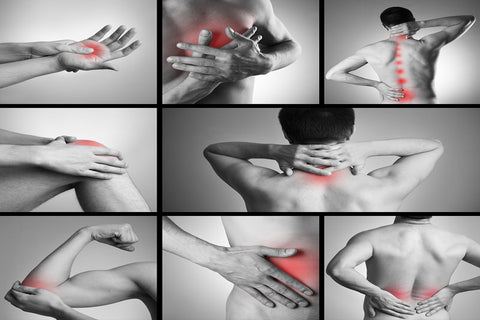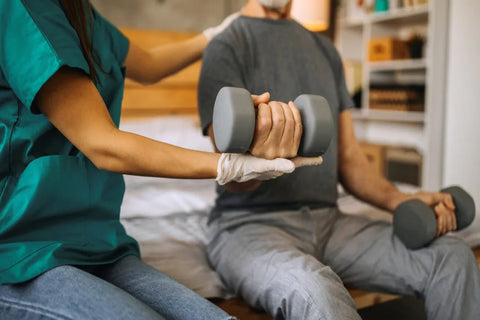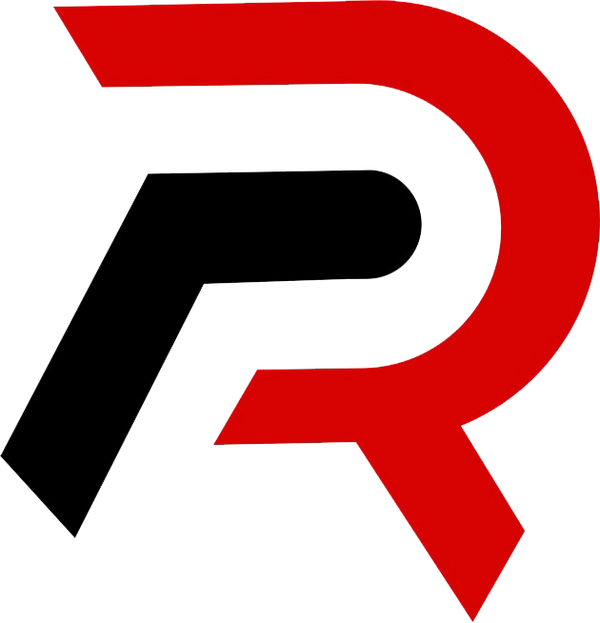Are you tired of dealing with persistent elbow pain every time you go to the gym or participate in your favorite sport? It's time to say goodbye to this unwelcome company, but who wants to suffer long recoveries or be sidelined from the game for good?
Is there anything I can do at home to go back to my game quickly? Good news! There is!!
Elbow pain may be a real bummer, impeding your development and taking away the enjoyment of exercise, and we understand your displeasure.
But don't worry, we've got you covered with some top recommendations to help you train around those cranky elbows and return to the absolute peak performance that you've worked so hard for.
As an athlete or fitness enthusiast, you've probably experienced occasional elbow soreness. Whether you're swinging a tennis racket, lifting heavy weights, exercising in any capacity, or simply going about your day, those twinges of pain can throw you off and disrupt your fitness regimen.
While there are several therapy options for elbow discomfort and injuries, one successful technique is to use a joint-by-joint training strategy. But, before we get into the details, let's define this technique and how it can transform your fitness training.
In this blog post, we'll go over six great suggestions for avoiding cranky elbows and training painlessly using the joint-by-joint technique. From correct warm-ups to specific exercises and smart adaptations, we'll teach you all you need to know to get back into the game with the same vigour.
How about your elbow pain?
Have you ever wondered why elbows are so easily injured that you can wake up with agony for no apparent reason?
There could be various explanations for this.
Our elbows move a lot and must support the weight of our bodies. Constant movement and weight bearing can strain the tendons and ligaments surrounding the elbow, causing swelling and discomfort.
And, guess what else? Our elbow bones are tiny and lack cushioning, making them more likely to break if we are not careful. Furthermore, our elbows are surrounded by several muscles, which can cause pain when they become weary.
You despise the nagging ache that wakes you up in the morning or the discomfort that bothers you throughout the day, and you will do anything to eliminate it. So, before you grab for those soft tissue treatments or inflammation-reducing pills, let's take a step back and investigate an alternative method.
The truth is, elbow pain does not usually indicate a serious cellular problem with your muscles or bones. There may also be simpler and more manageable explanations (the joyful truth).
Our bodies are remarkable machines, capable of adapting and altering in ways we cannot comprehend. Pain does not necessarily indicate that there is a "BIG" issue simmering in the background, causing those Spain waves to hit a specific portion of the body.
Put my argument in context with several studies demonstrating that many people with so-called "anatomical abnormalities" such as disc bulges, labral tears, or spinal stenosis live pain-free lives. It's mind-blowing, right? It demonstrates that pain is far more complex than these structural factors alone.
So, what is the game plan? Before we dive into therapies and supplements, let's try tweaking your fitness regimen to see if it helps.
Modifications to programming and techniques can be extremely effective. By making modifications, resolving imbalances, and fine-tuning your movements with joint-by-joint technique, you may be able to eliminate elbow pain.
Remember that our bodies are adaptable beasts, and our posture and movement influence how we feel. So, let's take a shot.
Joint-by-Joint Method for Elbow Pain

Using this approach, we can determine each joint's specific training demands and acquire a better knowledge of where they are prone to malfunction. It's all about understanding our joints' individual needs and taking proactive efforts to ensure they work optimally. So, let's take this joint-by-joint approach and realize the full potential of our magnificent joints!
So, here's the deal: our bodies have various joints, correct? And each joint has special requirements. Our elbows thrive on steadiness. They want to be stable and sturdy. But, guess what? The joints above and below the elbow, such as our shoulders and wrists, prefer to be more flexible and mobile.
Sometimes our elbows begin to pain. It could be that the other joints aren't supporting their weight. Perhaps we have tight shoulders or stiff wrists. When these joints do not move properly, it adds stress on our fragile elbows, causing pain.
To address this, we must focus on the entire upper body. We must determine whether our shoulders and wrists have adequate range of motion and stability. If not, they should exercise and stretch to increase their mobility. We may also need to strengthen the muscles surrounding our shoulders and wrists to properly support our elbows.
Once the surrounding muscles and joints are stronger and more mobile, elbow pain may resolve on its own since it will not be subjected to further pressure.
Six Tips for Relief of Elbow Pain Without Intervention
Before you start worrying more than you need to and resort to complicated external interventional procedures for your elbow pain, here are six fantastic recommendations for changing up your exercise routine in a way that relieves the pain and gets you back in the game.
Choose a neutral grip while pressing and pulling:
One of the first changes to make when dealing with cranky elbows is to use a neutral grip during pushing and pulling workouts. This grip position, in which the palms face each other, can reduce stress on the elbows and distribute the load more evenly.
Dumbbells or neutral-grip barbells are good alternatives to the typical barbell grip for pressing workouts such as bench presses and overhead presses. This is a fantastic yet simple approach to relieve elbow pain from bench press.
Similarly, for pulling exercises such as rows or pull-ups, using a neutral grip attachment or handles can assist alleviate elbow stress.
- SQUAT: Safety Bar Squat, High Bar Squat, Front Squat with Straps, Front Squat with Crossed Arms.
- HINGE: Trap Bar Deadlift, Trap Bar RDL, and DB RDL
- PUSH: Swiss Bar Bench Press, Pushup Variations, DB Floor Press, Trap Bar OHP, and Neutral Grip DB Press.
- PULL: Neutral Grip DB Row, V-Bar Cable Row (Wide and Narrow), Neutral Grip Chinup, and V-Bar Pulldown
- GUN SHOW: Swiss Bar Curl, DB Hammer Curl, Cable Rope Hammer Curl, Banded Hammer Curl, and DB Tricep Extension.
Modify Your Grip or Use Straps or Elbow Sleeves:
If your elbows pain during lifting, try using straps or adjusting how you hold the weights. Straps can relieve elbow strain caused by lifting big weights. They reduce part of the pressure on your grip and forearm muscles, making your elbows feel relaxed and freed of the burden of supporting large lifts.
Padded elbow sleeves provide support, stability, and comfort. Compression elbow sleeves enhance blood flow, reduce inflammation, support the joint with a firm elasticated construction while allowing for unrestricted mobility, and, ultimately, relieve pain and discomfort.
Another approach to reduce pressure on your elbows is to utilize a different grip, such as a thumbless grip, when performing exercises like the bench press or overhead press. Just remember to be cautious and practice correct form and safety while utilizing straps or changing grips.
Harness the Power of Irradiation:
Irradiation is the process of creating stress and activating new muscle groups to improve stability and strength. You can help to relieve strain on your elbows by intentionally engaging nearby muscle groups.
For example, when performing pressing exercises, squeezing the glutes, engaging the core, and gripping the bar hard can provide a sense of full-body tension that helps to reduce elbow stress. This technique can be used in a variety of workouts and is an efficient way to improve general strength and joint stability.
Allow your muscles to believe they are receiving assistance from their own kind, and they will naturally feel better on their own.
Avoid Excessive Cues:
While cues are widely used to improve exercise technique, it is vital to avoid using too many cues, which might cause elbow strain (unintentionally). Excessive instructions to "tuck the elbows" during bench presses or pull-ups, for example, might put additional strain on the elbows, especially if you already have pain.
Instead, you should focus on maintaining a natural range of motion that allows for comfortable movement without putting too much strain on your elbows. Experiment with several forms (safe variants) to find the best position that decreases discomfort while maintaining good alignment and muscle activation.
Choose high bar squats and maintain a loose grip:
Squats can sometimes cause elbow pain, particularly when performed with a low bar. You don't want to replace weighted squats because they work wonders for your glutes; simply switch to high-bar squats instead of low-bar ones. To clarify, in high bar squats, the barbell is resting on the upper traps rather than the lower back.
This change in bar placement decreases elbow strain and allows for a more upright torso posture. Furthermore, keeping a loose grasp on the barbell during squats can assist prevent elbow strain. Focus on lightly holding the barbell with your hands, focusing on your upper back and shoulder muscles for stability.
Give your joints some comfort. Go for some soft tissue work:

Soft tissue treatment, such as foam rolling and self-massage, can help to relieve muscle tension and promote recuperation around the elbows. Use a foam roller or a massage ball to target the muscles in the forearm, triceps, and upper arm.
To relieve tension and promote blood flow, apply light pressure and roll or massage the affected areas. Regular soft tissue training can assist to reduce muscular imbalances, alleviate discomfort, and improve overall elbow health.
Conclusion:
Elbow pain is not something to disregard because it is a vital joint in all activities. You will be upset and uncomfortable. You may feel compelled to run to the hospital and seek immediate surgical/medical treatment, but the situation is not always so serious. Small changes to your fitness program may help you get rid of this soreness. The blog post above outlines six fantastic strategies to manage and relieve elbow pain. Give them a try; they might spare you from having to go to the doctor.

